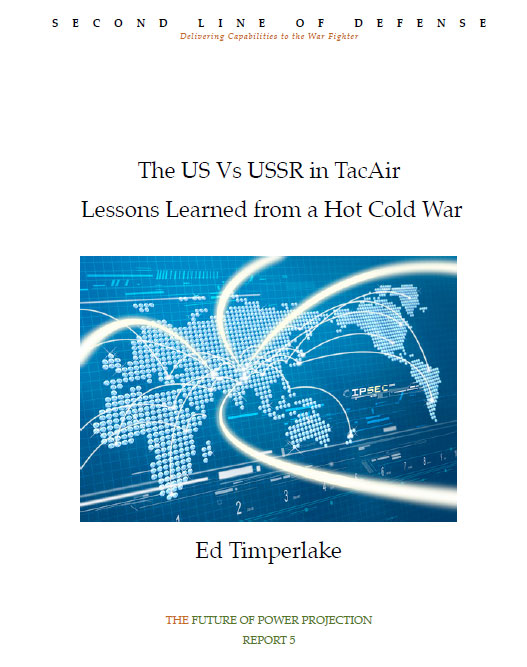By Ed Timperlake
11/29/2010 – In this posting and the associated special report, Ed Timperlake examines the key question of the interactive development of combat capability built around the tactical aircraft. As Ed Timperlake underscores:
The lesson for the air power rivalry between the US and USSR is rather straightforward: the technology had to be available but it also had to be successful understood and employed.
Ed Timperlake highlights the historical take away from an assessment of the US and USSR rivalry in this core combat area:
A historical take away from the cold/hot war air battles is that in the air-to-air mission a country that equips its fighters with airborne radar and sensors allows more autonomous action and actually favors tactical simplicity and operational autonomy—even though the equipment becomes more complex. In air-to-ground, airborne simplicity indicators are usually smaller formations and allowance to maneuver independently into weapon launch envelopes primarily in a weapons-free environment. Embedding technology into the weapon itself –bombs and rocket fired weapons– has also made a revolutionary difference.
A key conclusion is shaped by the Timperlake analysis: always assume a reactive enemy can develop the necessary technology to try and mitigate any advantages. With the world wide proliferation of weapons even a second or third world nation might have state-of-the art systems. The air war over the skies of Vietnam was between two peer competitors because of USSR support and constraints by the US national command authority on how the US would fight an air campaign.
The peer fight in the air abruptly ended when President Nixon unleashed the full power of US air in the famous Christmas bombing of 1972. The war ended quickly after that. When the North invaded the South in 1975 US air power was not used like the first invasion in1972, which was a dismal failure.
The lesson on the US-USSR rivalry is that air combat leaders must be able to adjust during the course of an air battle or war by changing strategy and tactics, to achieve exploitation of the enemy’s mistakes or weakness. Aircrews must be adaptable enough to follow changing commands from leadership and also, on their own initiative, to change tactics to achieve local surprise and exploitation. Like the quote in Animal House: “knowledge is good.” In the cockpit it can be a life saver and aid in mission accomplished.
An air-to-air engagement totally slaved to a ground controlled radar attack, the USSR model was a colossal failure and deadly to a lot of pilots locked into such a system. A bottom-up approach with evolving aircraft system capabilities in a competitive airframe makes for adaptive, creative aircrews that will have a large repertoire of tactical moves and a better chance of getting inside an opponent’s OODA loop. This is true for both air-to-air and air-to-ground combat missions.
As the history of war in the air shows it was a constantly evolving process of human factors integrated into technology. The Cold War ended well for humanity and a lot of courageous pilots, bold leaders, and smart technologists deserve a lot of credit for this great victory.
The US would be wise to remember the lessons learned and along the way the loss of very good men in the air who paid in their blood for America today to have the best technology available flown by best Air Force, Navy, and Marine aviators this country can produce.And to shape its concepts of operations to take advantage of the 5th generation aircraft and the associated new tools of combat.



